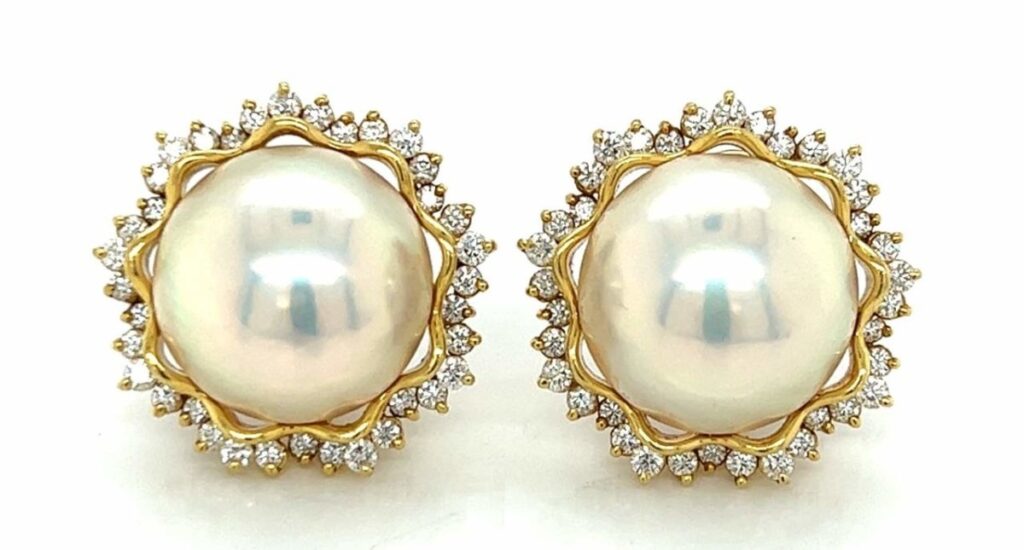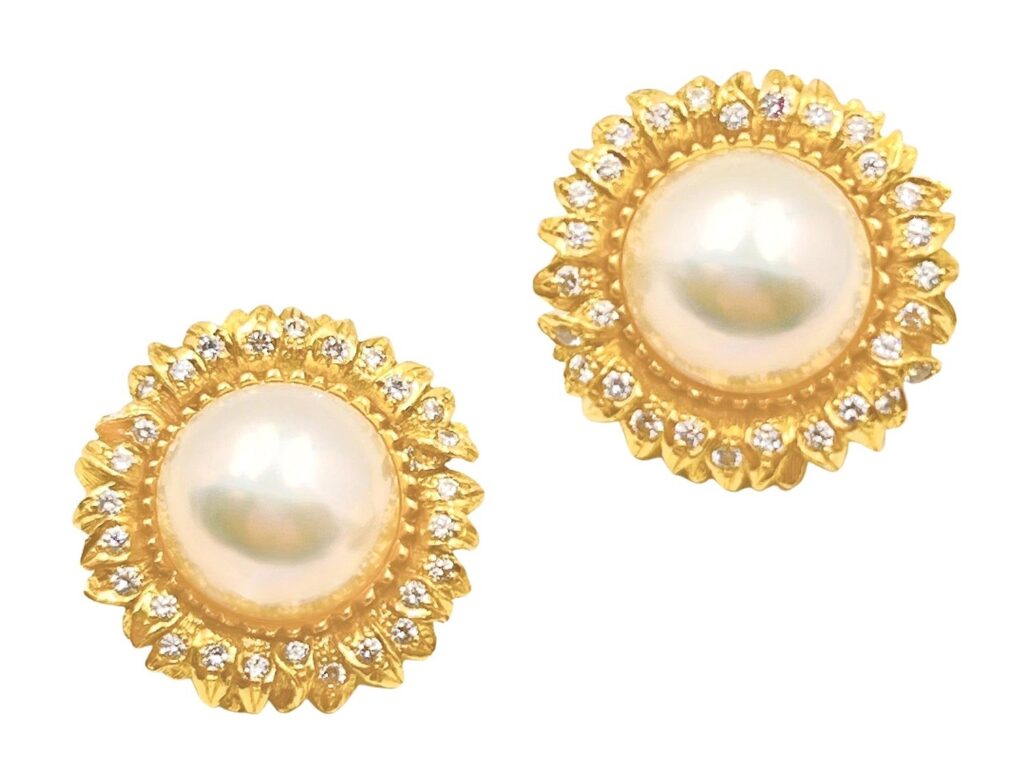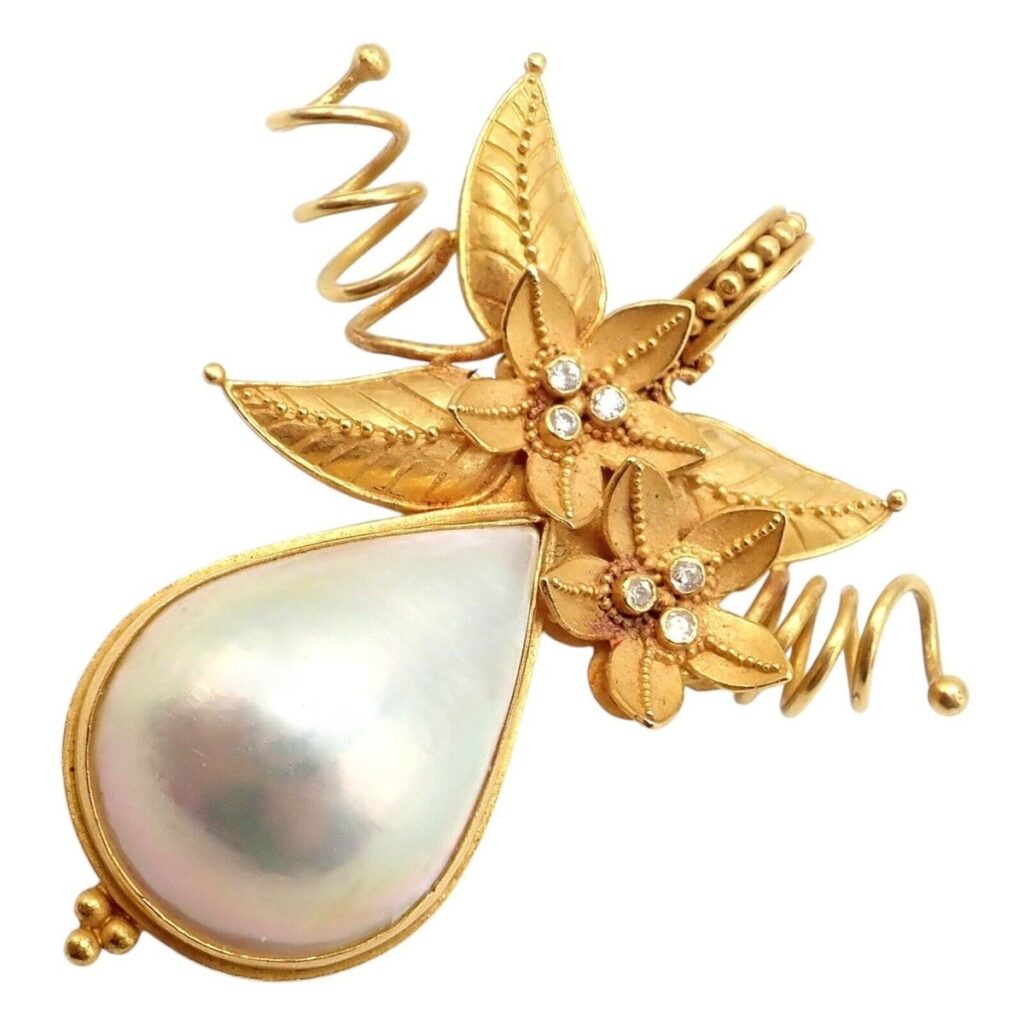Glowing like the moon in the midnight sky, mabe pearls have a mesmerizing satiny luster. Also known as half-pearls or blister pearls, these pearls are characterized by a flat bottom and domed top. So how do mabe pearls get their form?
To fully understand mabe pearls, we have to understand how they are cultured. Most cultured pearls strive to be perfectly spherical, mabe pearls can be formed into many shapes, bound by the commonality of a flat bottom and domed top.
Culturing a Mabe Pearl

Mabe pearls are cultured much like other pearls. With South Sea, Tahitian, or Akoya pearls, a highly trained pearl farmer places a nucleus into a mollusk, the intruding nucleus annoys it, so that it starts to produce nacre to soothe the irritation. After anywhere from a year to four years, a pearl is formed.
Mabe pearls are nucleated in the exact same way, with one major difference. Instead of placing the nucleating bead, often made of plastic, deeply into the mollusk, the nucleus is instead placed inside the inner lining of the shell. It is sometimes glued to the shell so it stays in place. Once again, the mollusk is irritated and produces nacre to ease the discomfort. However, in this case the nacre forms on the shell creating a half pearl, also called a blister pearl because they look like blisters when they are still on the shell. Generally, this process takes around three years.
The Next Steps

Once the mabe pearl has been formed, highly trained pearl farmers carefully remove it from the shell. Once it is removed from the shell, it is cleaned, filled with a resin, often epoxy, but in the past, tree sap, metal shavings or beeswax were used as filler. Once the pearl is filled, it is backed with mother of pearl, giving it a flat bottom. It is then officially a mabe pearl.
While most mabe pearls are half spheres, they can also be found in drop, oval, heart, star or other shapes. These silhouettes are created during the nucleation process, when a nucleating bead in a shape other than round is inserted into the mollusk.
The Mollusks

Usually for mabe pearl production, farmers use older, bigger mollusks, which are then placed in farming cages in water that is filled with nutrients that the mollusk needs to thrive. There are different types of mollusks that are used to culture mabe pearls, each producing a different type of pearl.
Mabe pearls got their name from one of the oysters used to produce them. The Pteria penguin, also known as a penguin wing oyster because of a “wing” that is part of its shell, is known as Mabegai in Japanese. The name was shortened to mabe. In addition to the Pteria penguin oysters, Ptera Sterna and Pinctada Maxima mollusks are also used to produce mabe pearls.
The penguin wing oyster tends to produce white saltwater pearls, usually from East Asia, they are the most common of the mabe pearls. The Ptera Sterna, found in saltwater around Mexico, produces black pearls. While the Pinctada Maxima, which is the saltwater oyster that produces South Sea pearls, will grow white or golden mabe pearls.
Determining Quality
Farmers spent years trying to perfect mabe pearls, but it wasn’t until the middle of the 1970s that there were enough available to be commercially viable. Today, mabe pearls are farmed in Australia, China, Indonesia, Japan, Kingdom of Tonga, Philippines and Vietnam.
How do you determine the quality of Mabe pearls? The same criteria for evaluating regular pearls are used for mabe: Shape, size, surface, luster, and color. In the case of mabe pearls the height of the dome is also important, generally, the higher the dome, the better.
Elegant and refined, mabe pearls are easy to match in shape and size, so you will frequently find them in earrings, however, they are also used in other types of jewelry. One of the benefits of mabe pearls, is that they tend to be a big look at a wallet friendly price.
Top of Page: Mabe pearl, diamond and 18-karat gold brooch, courtesy Jewelry World (@jewelryworldofficial).
Authored by Amber Michelle

